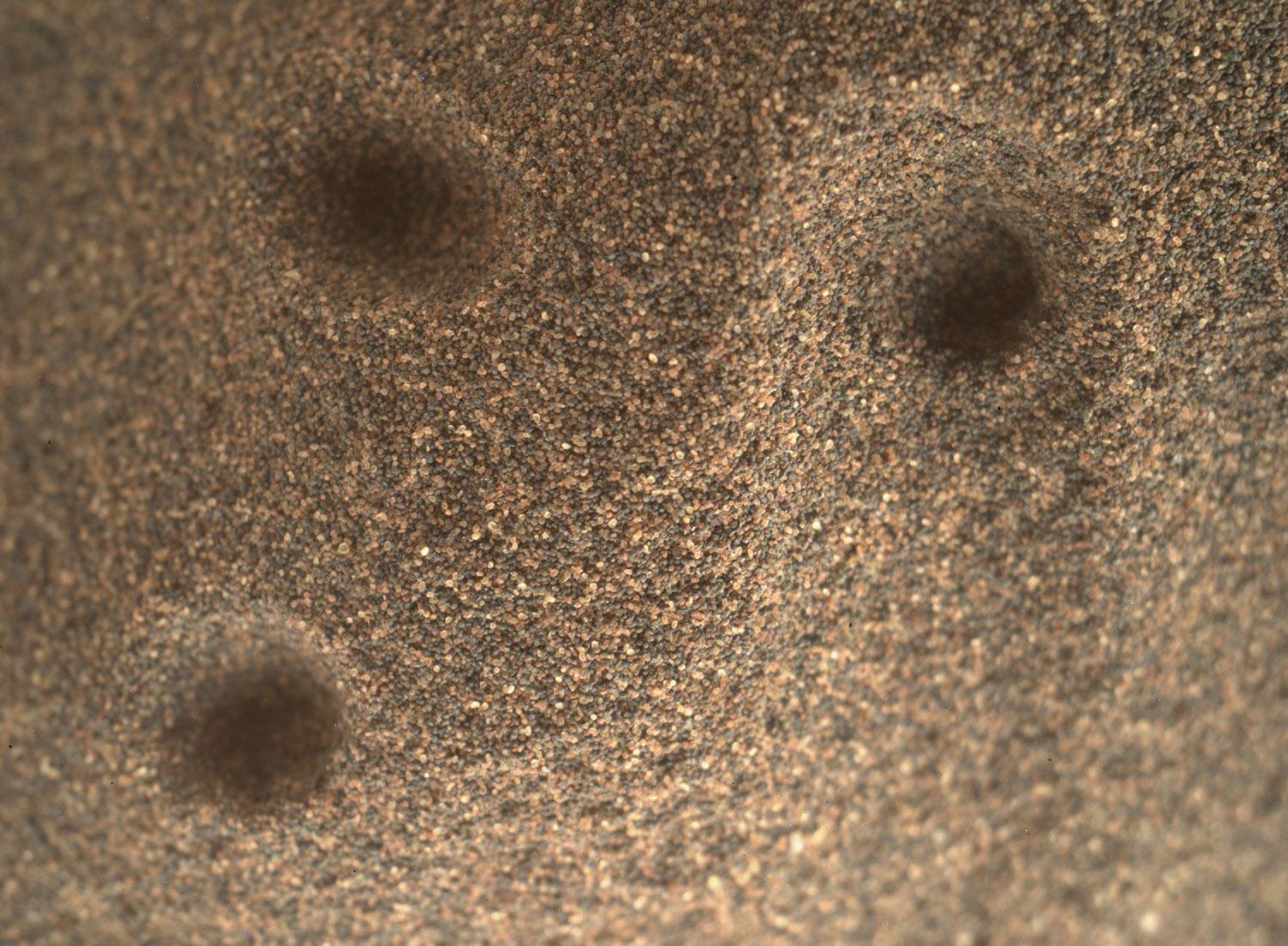Just a reminder that this picture was taken by a 1-ton plutonium-powered laser-eyed robotic mobile chemistry laboratory sitting on another planet.
But I can’t leave it there, of course.
First, the self-portrait taken by the Curiosity rover on Mars is a combination of 57 separate photos taken by a camera on the end of the rover’s robot arm. You don’t see the arm because the pictures are cleverly stitched together using only angles where you can’t see it. That gives the result the feel of a vacation picture, taken by someone standing nearby.
As for the dramatic setting, Curiosity edged into the Bagnold dune field on Mars a few months ago, investigating the huge wind-swept sand dunes there. It’s been snapping pictures as well as scooping up and sampling the sand grains there as well. My friend and wonderful science writer Emily Lakdawalla has—wait for it, waaaaait for it—the scoop on that.
There’s one picture Emily posted that I want to mention. It shows sand grains taken by the Mars Hand Lens Imager (MAHLI), a camera on the rover that is capable of close-up images of the surface (the same one used to take the self-portrait). It’s a portion of this, a bigger image:

NASA/JPL-Caltech/MSSS
Look at that! Those are sand grains on Mars! This is the highest-resolution image ever taken on Mars by MAHLI, done by jockeying the camera closer to the surface than had ever been attempted before; again, see Emily’s post for the whole story, which is well worth your time.
I was curious (so to speak) about those pits in the sand, so I asked Emily, and she told me those are zap pits, blasted into the surface by Curiosity’s powerful laser! It vaporizes the material, which then glows from the heat. As it glows, a detector on the rover (called ChemCam) takes a spectrum of it, which reveals the chemical composition of the material.
By eye, I wouldn’t think twice if I scooped up sand like that here on Earth. Some of the grains are dark, some more glassy-looking. It could be the stuff I washed off my feet when I went to the beach not too far from where I grew up in Virginia.
Except it’s not. It’s on another world.
When that fact sinks in, really sinks in, it gives me chills. This is what we do, we humans. We send our proxies to other planets so that we may study them up close, and find out how they work. It’s simply and truthfully one of the noblest and best things we do.
